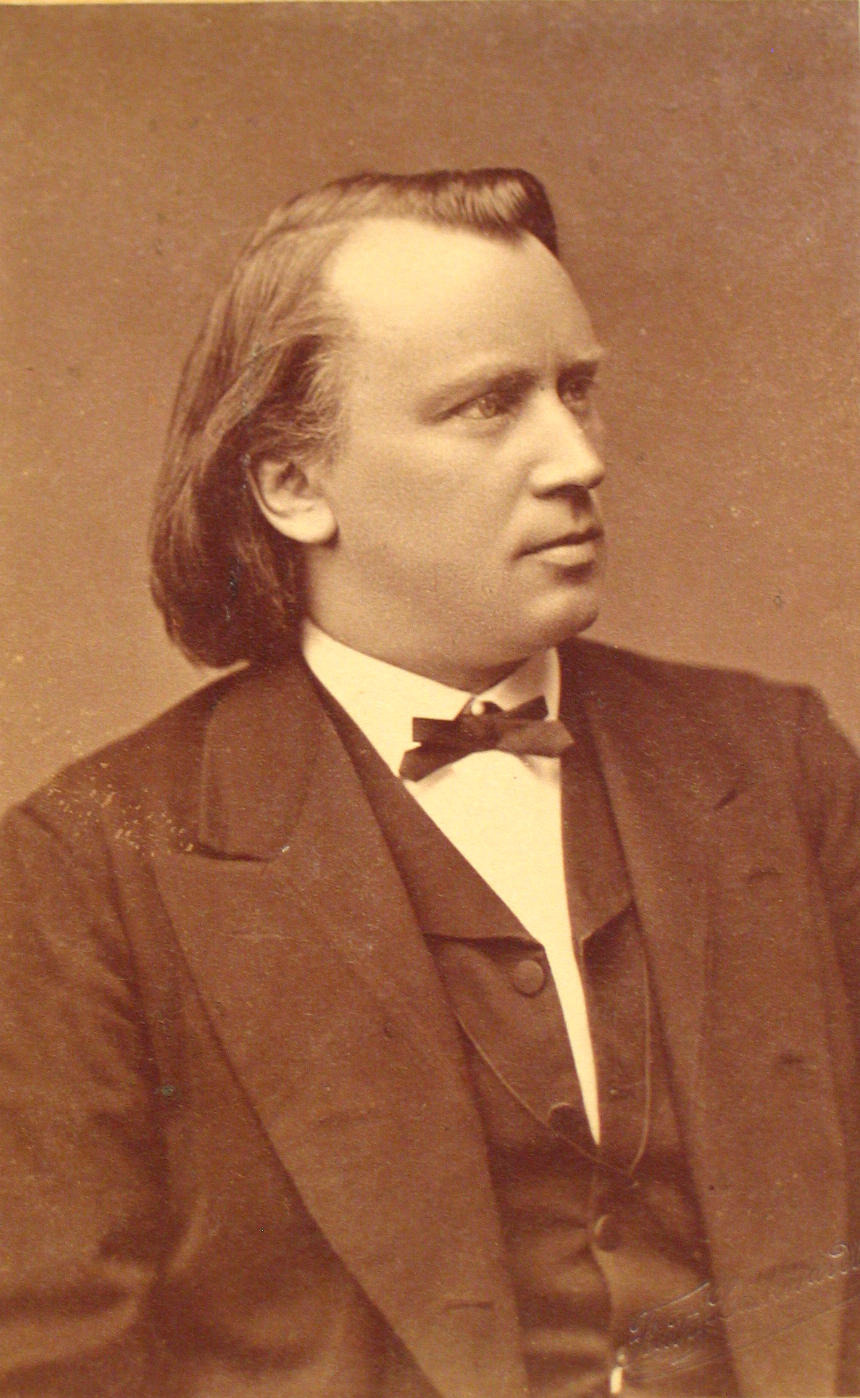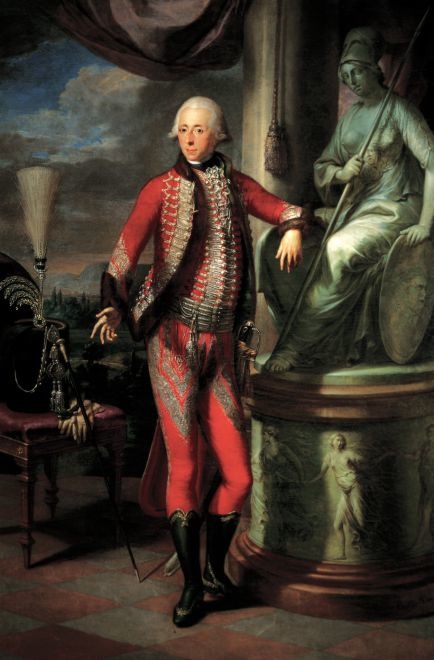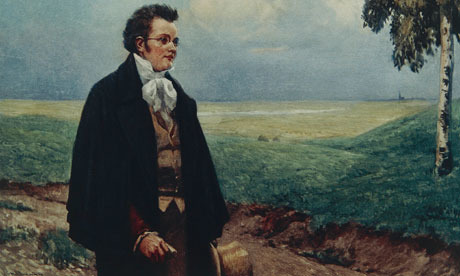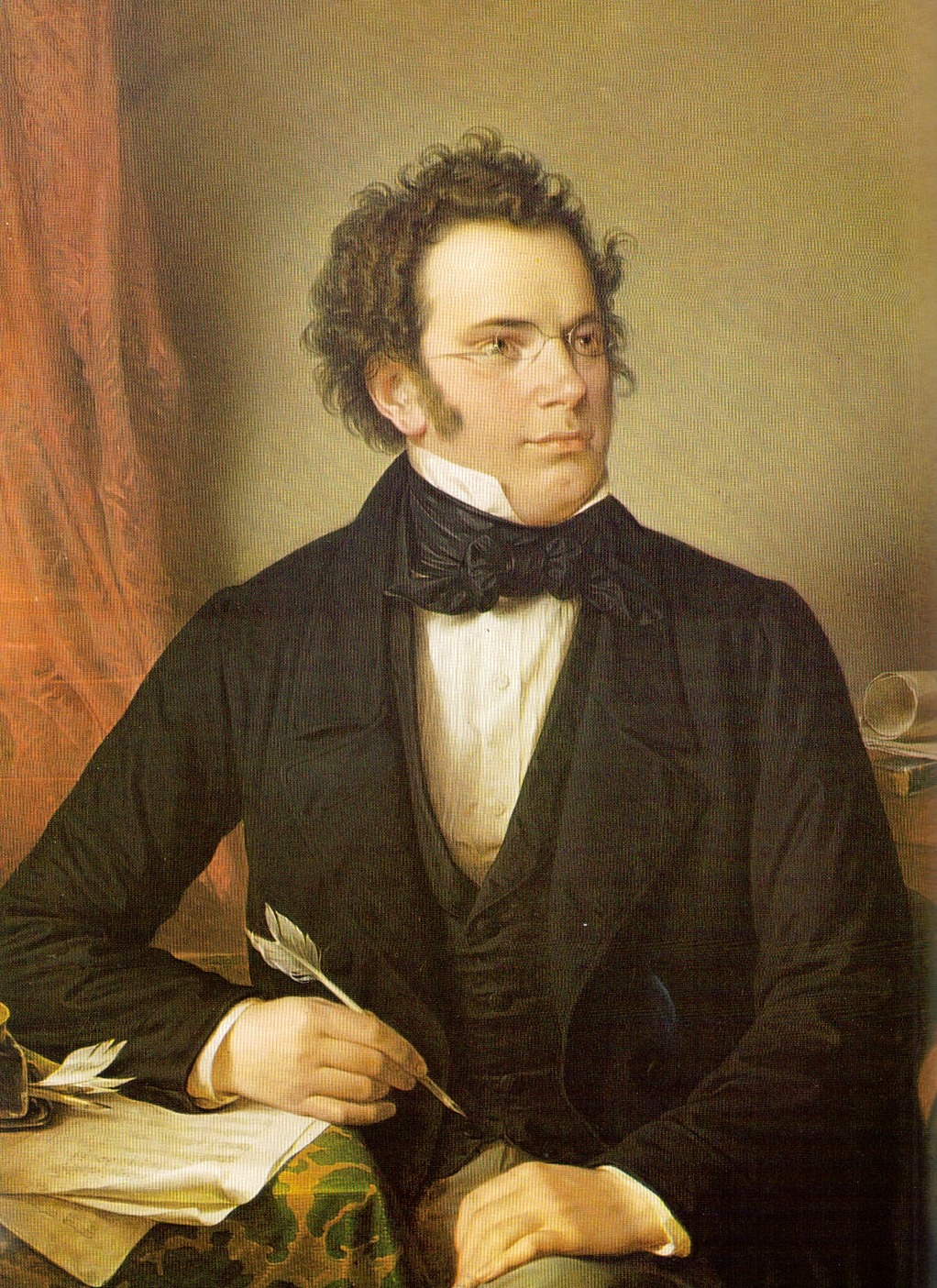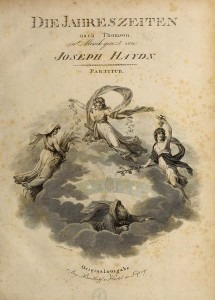
The title page for the first edition of The Seasons
One of his most interesting works is his book, The Elements of the Beautiful in Music, published in London in 1876. In the second chapter, he looks at the affective properties of keys, as did many other 19th century composers. But, unlike them, he actually listed works that he felt fulfilled his requirements.
Pauer saw the key of G major as the key of youth, a key that expresses sincerity of faith, quiet love, calm meditation, simple grace, pastoral life, and a certain humour and brightness. For his examples, he chooses works by Mendelssohn, Mozart, Rossini, Haydn, and Beethoven.
From Mendelssohn, he chooses a recitative and aria from part I of his oratorio, St. Paul, “Doch der Herr vergisst der Seinen nicht” (But the Lord is mindful of his own). The opening recitative describes the crowd at Damascus before the Voice of Christendom comes in at the aria to say that the Lord protects his followers – clearly part of Pauer’s sincerity of faith affect.
Mendelssohn: Paulus, Op. 36: Recitative: Und zog mit einer Schar (Alto) – Arioso: Doch der Herr vergisst der Seinen nicht (Annette Markert, alto; La Chapelle Royale; Orchestre des Champs-Elysées ; Philippe Herreweghe, cond.)
From Mozart’s Don Giovanni, Pauer selects Ottavio’s second aria “Dalla sua pace.” This aria, coming at the end of Act I, is Ottavio’s vow to keep a protective eye on the newly orphaned Donna Anna, declaring that it is “On her peace, my peace depends”.
Mozart: Don Giovanni: Act I, Scene 14: Dalla sua pace (Kenneth Riegel, Don Ottavio; Paris National Opera Orchestra; Lorin Maazel, cond.)
Pauer also chooses Mozart’s “Symphony in D major.” This isn’t as specific as it sounds, as Mozart’s Symphonies Nos. 4, 7, 8, 20, 23, 30, 31, 35, and 38 are all in D major. Since Pauer was really looking at important works and we’re talking about the affect of the key of G major, we can look at two G major movements from the two late symphonies and see if we can figure out what he was looking at.
Symphony No. 35, the Haffner, has a second movement in G major. This Andante is a movement of graceful woodwinds.
Mozart: Symphony No. 35 in D Major, K. 385, “Haffner”: II. Andante (Bavarian Radio Symphony Orchestra; Rafael Kubelik, – cond.)
Symphony No. 38, Prague, also has a second movement in G major.
Mozart: Symphony No. 38 in D Major, K. 504, “Prague”: II. Andante (Bavarian Radio Symphony Orchestra; Rafael Kubelik, – cond.)
However, the Prague symphony seems a less likely candidate for Pauer’s affect of G major. It turns towards the dark side too much to carry the sincerity and positivity that Pauer gives to this key.
From Rossin’s opera of Swiss nationalism, Guillaume Tell, Pauer chooses the “Ranz des vaches,” a pastoral instrument section at the beginning of Act I.
Rossini: Guillaume Tell: Act I Scene 1: Ranz des vaches (Santa Cecilia Academy Orchestra, Rome; Antonio Pappano, – cond.)
Haydn’s first part of his oratorio Die Jahrszeiten (The Seasons), Spring, provides us with Pauer’s next example, that of the first chorus. This chorus “Komm, holder Lenz!” is the chorus summoning Spring out of her wintery grave and asks her to descend while music “wakes around.”
Haydn: Die Jahreszeiten, Hob. XXI: 3, Der Fruhling: Komm, holder Lenz! (Arnold Schoenberg Choir; Concentus Musicus Wien; Nikolaus Harnoncourt, cond.)
The final example comes from Beethoven’s Piano Concerto No. 4, the final movement. This movement begins in C major, but ends in G major. As is common in so many Beethoven works, the theme is very rhythmic.
Beethoven: Piano Concerto No. 4 in G Major, Op. 58: III. Rondo: Vivace (Murray Perahia, piano; Royal Concertgebouw Orchestra; Bernard Haitink, cond.)
In looking over all these works, and comparing them to list Pauer created for C major, we end up with a very different feeling. It’s more complicated than the innocence of C major.
Next: G minor

